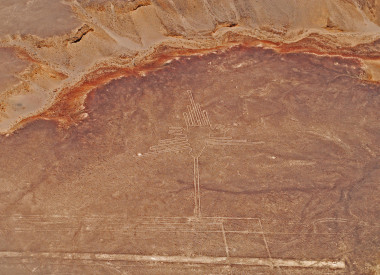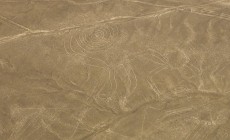-
Latin America
Latin America
- Countries (hidden space)
- Galapagos & Ecuador
- Guatemala
- Mexico
- Panama
- Peru
- Popular Attractions
- Machu Picchu
- Inca Trail
- Easter Island
- Galapagos Islands
- Patagonia
- Rio de Janeiro
- Iguazu Falls
-
Africa
Africa
- Spacer Africa
- South Africa
- Zimbabwe
- Popular Attractions
- Cape Town
- Okavango Delta
- Sossusvlei Dunes
- Victoria Falls
- The Kruger
- The Garden Route
- Masai Mara
-
Asia & Middle East
Asia & Middle East
- Asia
- Borneo (Malaysia)
- Cambodia
- India
- Japan
- Middle East
- Jordan
- Spacer Asia
- Laos
- Sri Lanka
- Uzbekistan
- Vietnam
- Popular Attractions
- Taj Mahal
- Lion Rock (Sigiriya)
- Angkor Wat
- Ha Long Bay
- Kyoto
- Petra
-
Destinations
- Latin America
- Argentina
- Bolivia
- Brazil
- Chile
- Colombia
- Costa Rica
- Galapagos & Ecuador
- Guatemala
- Mexico
- Panama
- Peru
- Asia
- Borneo (Malaysia)
- Cambodia
- India
- Japan
- Laos
- Sri Lanka
- Uzbekistan
- Vietnam
- Middle East
- Jordan
- Southern & East Africa
- Botswana
- Kenya
- Namibia
- South Africa
- Zimbabwe
- Contact Us
-
About
About
Llama Travel provides high quality holidays at the lowest possible prices.
99% recommend us Lower prices - guaranteed Financially protected by ATOL
The Nazca Lines are giant etchings in the desert, created by removing rocks from the sand and piling them up to create vast shapes. These include long, straight lines, running for kilometres, triangles and zigzags, as well as the better-known zoomorphic lines, such as the spider, monkey and hummingbird. Impressive enough as giant desert artwork, it is the mystery behind the lines that gives them their enduring appeal.
The lines were begun over 2,500 years ago, and the Nazca people probably continued to etch them for hundreds of years. However, modern knowledge of the lines only emerged in 1926 with the first flights over the area. The fact that the lines could only be seen and appreciated from above has led to many theories, some of which can at best be described as very wild. One of the stranger theories, discarded by most scientists, is Erich von Daniken’s landing strip for aliens.
One person in particular has contributed to the study and knowledge of the lines. This is Maria Reiche, a German mathematician who examined the lines for sixty years, from the 1930s until her death in June 1998. She believed that the lines formed a giant astronomical calendar, with the animal shapes representing the movement of the stars. She thought that the lines were related to the celestial bodies, as some of the lines pointed to the sun at the winter and summer solstices. Although the calendar theory is now generally thought to be incomplete, with many of the lines unrelated to the heavens, Maria Reiche undoubtedly contributed significantly to the study and preservation of the lines.
Recent research now indicates that many of the lines are actually linked to water. Living in an incredibly dry desert, water was obviously a critical element in the lives of the Nazca people. There is now evidence of a drought in the area around 550AD, a time that corresponds to increasing line drawing and to the abandonment of nearby Cahuachi temples. Changes in religious practices may have come about to appease the gods and to bring rains to alleviate the drought. It is speculated that the impressive trapezoids were created at about this time and that they were spaces in which sacrifices to the gods were made.
The giant animal drawings in the desert are thought to be linked to the shamanic practices of the Nazca people. There are strong links between the zoomorphic lines and designs on Nazca pottery, which in some cases depict images of shaman flying. It is thought that the shaman took psychedelic drugs, which allowed him to enter the spirit world. Here he would commune with gods and animals in the spirit world to heal the sick. The lines represent many of the animals thought to possess spiritual power, and are therefore considered likely to be linked to the spiritual journeys of the shaman. It is thought that in times of drought the people would walk the lines, evoking the power of the gods and thus bring the drought to an end.
There are probably many other theories as to the origins of the Nazca Lines, and no doubt others will emerge with the years. Although it may be impossible to prove any, the mystery surrounding the drawings makes the lines a fascinating attraction.
The Nazca Lines are located approximately 400km south of Lima, on Peru's coastal plains. The best way to experience them is by taking a flight from Ica, which lasts around 90 minutes and offers an amazing view of the geoglyphs from above.
Flying over the Nazca Lines
A flight over the Nazca lines is one of the best ways to experience these incredible archaeological features, and Llama Travel offers an excursion that allows you to experience these mysterious etchings from above. The 90 minute flight provides a different persepctive on the lines, and you will no doubt be amazed by their size, precision and diversity of depictions.
Find out more about the mystery of the Nazca Lines by speaking to one of our experts on 020 7263 3000.



